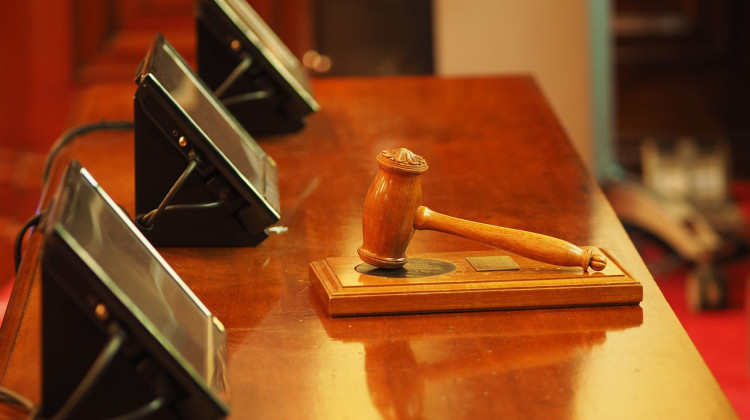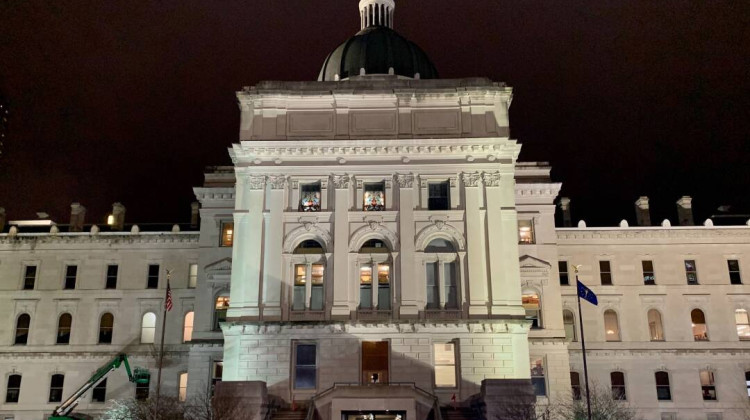
U.S. District Court Judge James Sweeney II, of the southern district, ruled in favor of the Reporters Committee for Freedom of the Press and a coalition of other journalism groups and media outlets.
File Photo: WFYIA federal judge late Friday blocked a law creating a 25-foot buffer zone around law enforcement officers during certain activities.
U.S. District Court Judge James Sweeney II, of the southern district, ruled in favor of the Reporters Committee for Freedom of the Press and a coalition of other Hoosier journalism organizations and media outlets.
The Indiana Attorney General’s Office had sought to dismiss the case, which the judge denied.
“Simply being within twenty-five feet of a police officer is not a crime, and indeed, important First Amendment rights are regularly exercised within twenty-five feet of law enforcement every single day,” Sweeney said.
But he focused his ruling on a 14th Amendment vagueness claim.
“This is not specific enough to allow the general public or reporters to know how to conduct themselves to avoid receiving an order to move,” the 26-page decision said.
Lawmakers passed the law in April 2023, under which officers engaged in “lawful duties” can order someone to stay 25 feet away or risk a Class C misdemeanor. Supporters at the time said some situations become more volatile when people are too close to the officers.
Members of the press and the public argue the so-called “buffer zone” limits their ability to hold law enforcement accountable, especially when it comes to public recordings.
The media plaintiffs argued in the case that the law was too vague because it contains no limiting standards for police officers to follow or indications of what type of conduct will prompt an officer to order someone to move back.
“The Buffer Law is clear about what conduct may lead to an arrest: refusing to obey an officer after being told to move when one is within twenty-five feet. However, the constitutional vagueness analysis requires more when a law criminalizes failing to obey such an order, as due process requires a “warning about the behavior” that will prompt that order,” the ruling said.
There is a second ongoing parallel case challenging the law, and it was also in court on Friday.
The American Civil Liberties Union (ACLU) of Indiana filed a lawsuit in August 2023 on behalf of South Bend’s Donald Nicodemus, whose YouTube channel captures his interactions with the local police force, saying the law infringed on his constitutional rights.
Nicodemus has previously encountered controversies as a “citizen journalist” and captured video of an officer ordering Nicodemus to stand 25 feet away.
But U.S. District Court Judge Damon R. Leichty appeared not to sympathize with the ACLU’s arguments and found the law constitutional. He operates in Indiana’s northern district.
The U.S. Court of Appeals for the 7th Circuit heard arguments in that case on Friday with a ruling expected soon.
Indiana Capital Chronicle is part of States Newsroom, a nonprofit news network supported by grants and a coalition of donors as a 501c(3) public charity. Indiana Capital Chronicle maintains editorial independence. Contact Editor Niki Kelly for questions: info@indianacapitalchronicle.com. Follow Indiana Capital Chronicle on Facebook and X.
 DONATE
DONATE








 Support WFYI. We can't do it without you.
Support WFYI. We can't do it without you.